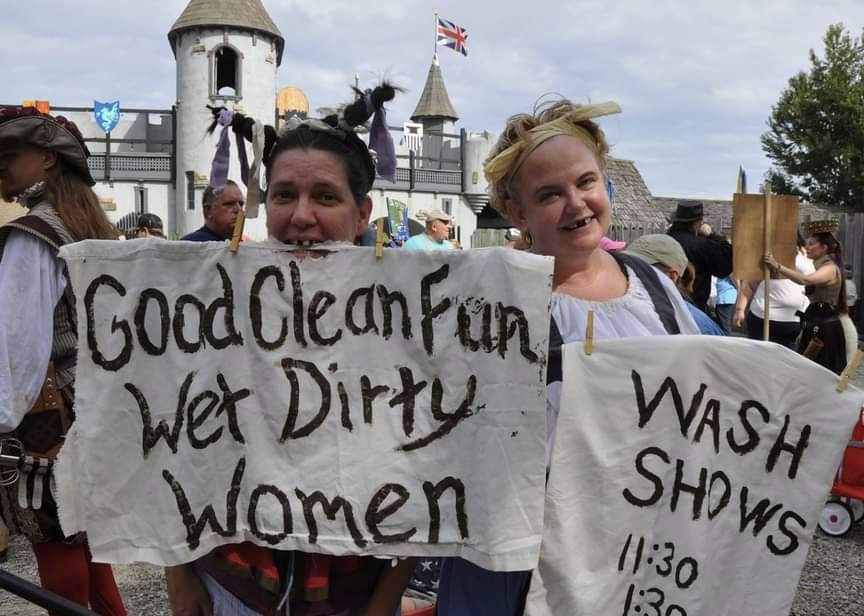A (Very) Brief History of the Laundress
In the annals of history, the work of the average individual is overlooked in favor of the life-world-altering events that so often define our knowledge of the past. This is especially true of tasks that were considered ‘women’s work’. The drudgery of maintaining a household cannot possibly be that interesting in comparison to the scandal and political intrigues of the upper classes – could it?
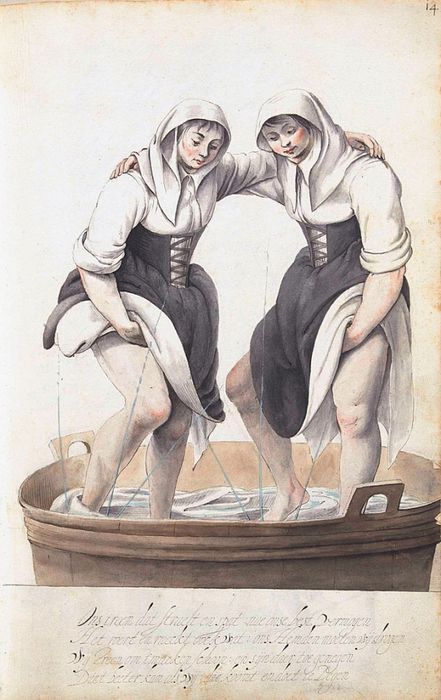
Cleanliness was not so far removed from the people of the past as we have been led to believe. True, the streets were dirty, no more so than the crowded cities which had no shortage of offal, waste products both human and animal, and assorted garbage that cluttered the path. But this was all the more reason for Tudor folk to work so hard to keep themselves and their homes tidy. One’s ability to do so was often limited to what they could afford, but even the poor found ways to maintain some semblance of hygiene. Ladies’ household manuals were often filled with economic options for how to prepare washing water with cheap, common herbs like rosemary, sage, and lavender to help combat the smell of body odor. Wealthy folk wore pomanders stuffed with more expensive spices to ward off the ‘miasma’ in the streets. But keeping one’s clothing clean was of utmost importance, which is where we come to the career of the washing woman or laundress.
King Henry VIII employed a laundress by the name of Anne Harris during his years on the throne, a duty for which she was paid £10 a year, or roughly £4,412 today. While that may not sound like much, it was her money and hers alone, not the income of her husband, with which she could do as she wished, a rarity for the Tudor woman.
Being a washerwoman was an incredibly difficult and laborious job to take on. Only wealthy households could afford to keep a staff dedicated to this task, as laundry took days to complete thoroughly and even longer for large estates. This was not as simple as dumping soap in hot water and scrubbing till the stain was gone. Washing women had to have a vast array of knowledge for how to get clothing and household linens clean without ruining the dense, woolen fabrics or delicate embroidery for wealthy clients.
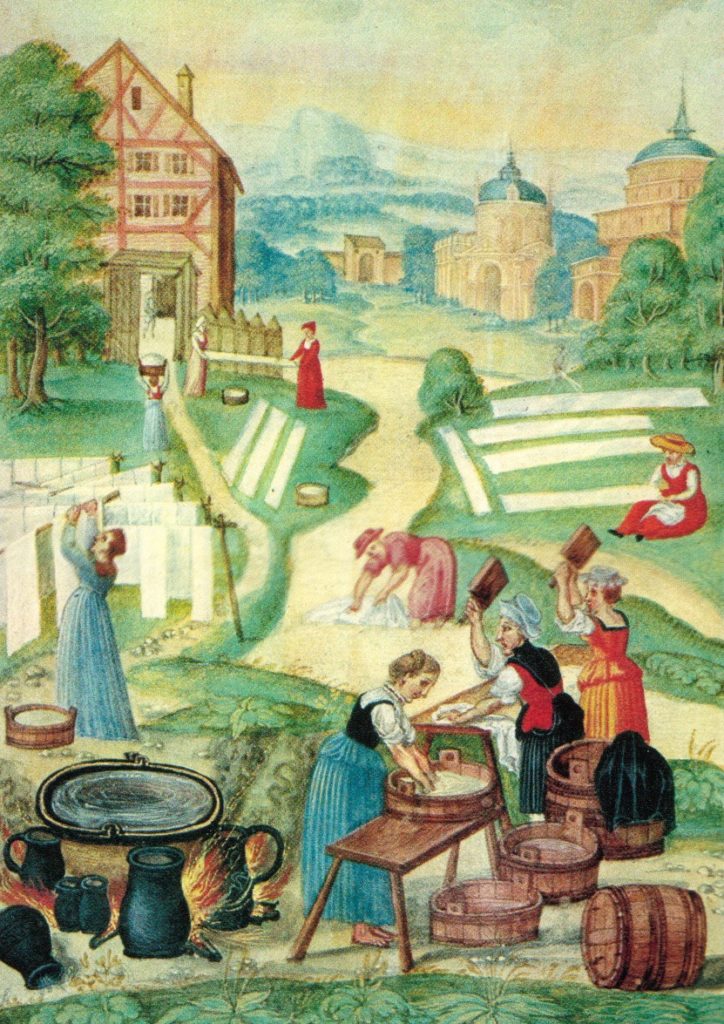
“A buck tub was a large tub, rather like a barrel, which stood up on a stand that raised it about a foot from the ground. It had a tap set about an inch above the bottom. A shallow wooden tub was placed under the tap. Filling the bucking tub (or ‘laying’ the buck) was quite a skilled task, as the linen had to be folded and set in such a way that the water poured in at the top would run through all the linen, and so that dirty water would not be caught up in the material and so leave a dirty mark. Sticks were placed between the bundle of linen so that the water could pass through freely. Once the tub was filled with linen, ley would be poured in the barrel. This ‘strong alkaline solution’ was made either by making water pass through clean wood ashes or from the ashes of dried ferns. Once the linen had been left to soak, the ley would be let out through a tap at the bottom of the tub and then the linen would be turned. Once the dirt was dissolved, the linen was rinsed in running water and if required ‘also bleached in the sun and wind by laying it on the ground or over a bush, and wetting it repeatedly.”
– Alison Sim, The Tudor Housewife
Clean, crisp white linens were a sign of respectability during the Tudor Era. And in order to achieve this tidy lack of stain in one’s whites, there was only one solution that could get the job done – stale human urine. Collected from piss pots, the urine was allowed to ferment for weeks until it reached the ammonia potency needed to bleach the lines to their desired whiteness. This was then added to lye and water where the bucking process could be repeated. After this, the linens were hung to dry in the sun to complete the process.
Laundresses, especially those working for wealthy families, also had to be wary of what they said and to whom. They were often privy to information that no one else would have access to, such as the condition of the lord and lady of the house, their regularity of marital congress, their injuries and healing process, and overall health conditions. So it behooved the wealthy to pay their servants for discretion.
Being a washing woman was a difficult, exhausting job, but for many women of the time it afforded them an expendable income. It is a small portion of the long-undersold history of women’s contributions to basic societal function throughout history and is well worth a deep dive if you have the time.
An Interview with the Washer Well Wenches
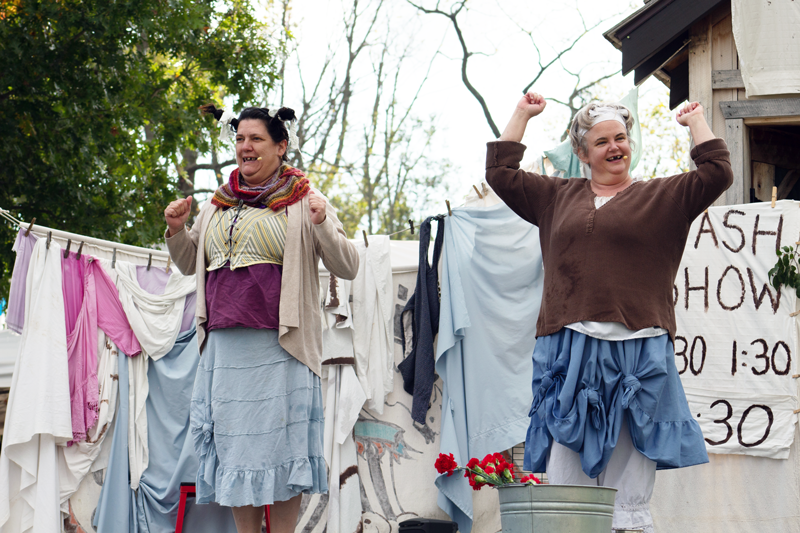
League of Laundresses
Neilly Fletcher aka Sophie the Washer Wench: My first fair was the Michigan Renaissance Festival. I was asked by Olive (one of the original washerwomen) to fill in for her for a weekend doing the Wash Show. I had never been to a Renaissance Festival. I had no idea what to expect. It was huge! The performers were amazing and it was very intimidating. I made it through that first weekend….26 years ago…and I’m still at it.
I believe I was 22 when I started and I will be 49 this year. My mentors were Christine Mouch and Danielle DuPont. The OG Washer Women. They taught me everything from how to lace up a corset to blacking out my teeth. Most importantly they taught me how to interact with and read an audience. There are currently over 35 women across the country performing The Wash Show. We do know each other and chat frequently on social media. We have our own personas but the show is generally the same. We each give it our own twist. We share tips and bits and we’re all grateful to be a part of a show featuring powerful, funny women.
The heart of the show hasn’t changed a lot over the years but I definitely have. I’m way more comfortable. I better be after 26 years.
Audience Participation
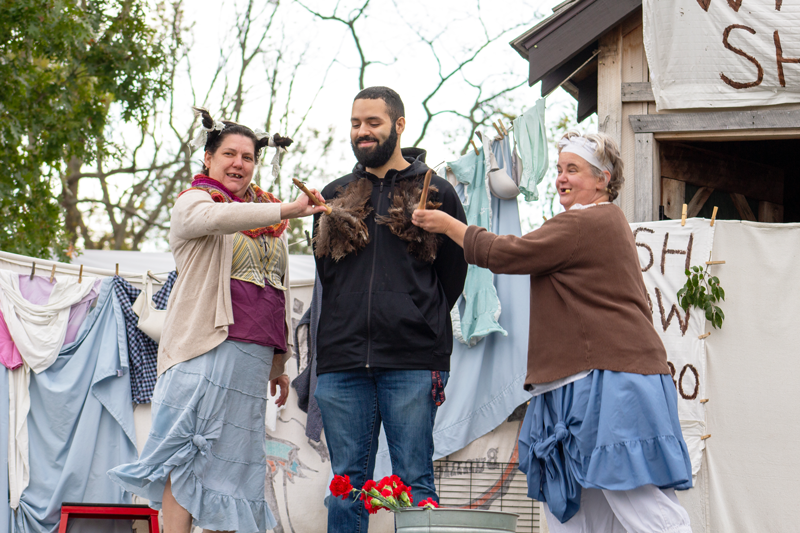
Neilly: I think the most important part of being a washer wench is being able to facilitate an environment of frivolity. We just want everyone who decides to spend some of their day with us to have the best time ever. Picking the right audience member takes a long time to perfect. I start looking for my “volunteers” as soon as they take their seats. I look for a person who seems easygoing. I note their body language. Do they seem happy today? Are they having a good time? Or are they too hot, angry, and over it. I think people respond so well because they are very much included in what we do. It’s a group effort. We need them to do their part just as much as they need us to do our part.
I think most people go along with the bit because Penelope and I are pretty good pickers at this point. Also when they have the energy of the audience rooting them on that always helps.
If someone flat-out refuses we move on to someone else.
Laundress Lifestyle
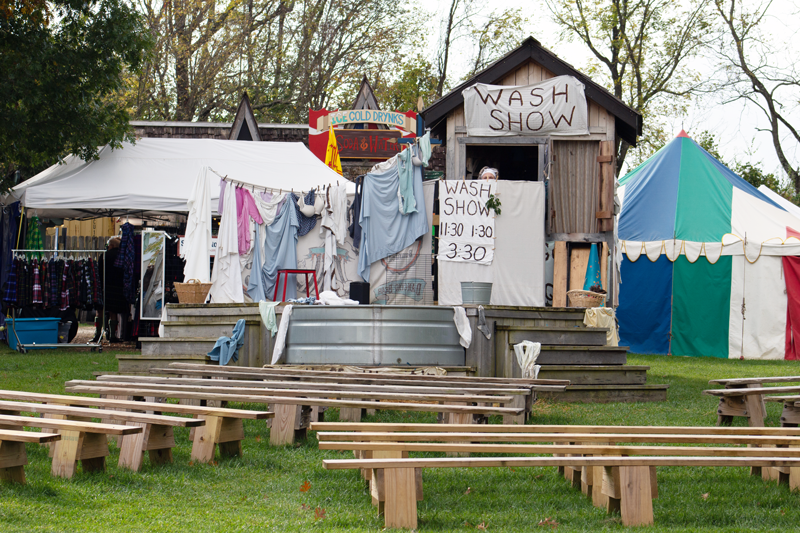
Neilly: Every season I look forward to mornings at the Ren Fair. Before we open there’s a bit of drumming in the distance. It’s just lovely. I look forward to seeing people I haven’t seen all year. I look forward to hanging out backstage with Penelope and laughing until we cry. I look forward to spending time with patrons who have become family. As far as pre-show prep. I wish I had a very healthy answer here. I drink a coffee….do some mediocre stretching….and try to not eat an entire block of cheese.
My favorite part of being a Renaissance Festival performer is the people I meet. So many different walks of life. So many different stories. From security guards to food booth employees to patrons and fellow performers. I’m grateful that I get to spend time with all of these people. I love and adore each and every one of them.
The most difficult part of this career is injuries. I’ve incurred quite a few over the years and it changes things. I’ve performed with a broken ankle and a torn meniscus. Performing with a torn meniscus was incredibly painful. I never want to try that one again. I am more physically cautious onstage, I definitely don’t move around like I did 20 years ago.
And I REALLY look forward to sitting in the wash pit when it’s 90 degrees out.
